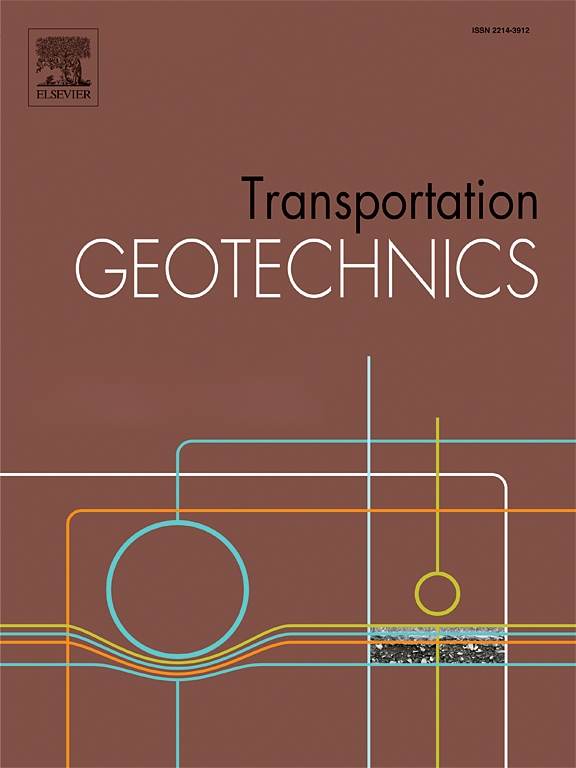Optimization of transition section treatments between bridge and regular track using DEM coupled simulation
IF 5.5
2区 工程技术
Q1 ENGINEERING, CIVIL
引用次数: 0
Abstract
This study investigates the impact of four treatment measures—wedge-shape backfill, asphalt mat, concrete slab approach, and stone column installation—on the dynamic performance of railway transition zones, using a coupled Discrete Element Method and Multibody Dynamics model. A 24 m long full-scale three-dimensional model of the transition section, including the discrete ballast particles and discontinuous subgrade elements, was developed to simulate uneven settlement under cyclic M-wave train loads and evaluate the effectiveness of the treatments. The results reveal that all treatments significantly reduced the uneven settlement of the track, with wedge-shape backfill and stone column treatments showing the most promising results, reducing uneven settlement by 42.2 % and 41.1 %, respectively. These treatments also improved the load-bearing capacity of the ballast layer by increasing particle contacts and reducing particle movement. The stone column method notably suppressed particle movement in the ballast layer by distributing the applied load more effectively. In contrast, the asphalt mat and concrete slab methods showed moderate improvements. This study highlights the importance of enhancing subgrade stiffness in transition zones to mitigate settlement.
基于DEM耦合模拟的桥梁与轨道过渡段处理优化
本文采用离散元法和多体动力学模型,研究了楔形回填、沥青垫层、混凝土板法和石柱安装四种处理措施对铁路过渡区动力性能的影响。建立了一个24 m长的过渡段全尺寸三维模型,包括离散的道砟颗粒和不连续的路基单元,以模拟m波列车循环荷载下的不均匀沉降,并评估处理的有效性。结果表明:各处理均能显著降低轨道不均匀沉降,其中楔形回填和石柱处理效果最好,分别减少了42.2%和41.1%的不均匀沉降;这些处理还通过增加颗粒接触和减少颗粒运动来提高压载层的承载能力。石柱法通过更有效地分配施加的荷载,显著地抑制了碴层中的颗粒运动。相比之下,沥青垫和混凝土板方法表现出适度的改善。本研究强调了提高过渡区路基刚度以减轻沉降的重要性。
本文章由计算机程序翻译,如有差异,请以英文原文为准。
求助全文
约1分钟内获得全文
求助全文
来源期刊

Transportation Geotechnics
Social Sciences-Transportation
CiteScore
8.10
自引率
11.30%
发文量
194
审稿时长
51 days
期刊介绍:
Transportation Geotechnics is a journal dedicated to publishing high-quality, theoretical, and applied papers that cover all facets of geotechnics for transportation infrastructure such as roads, highways, railways, underground railways, airfields, and waterways. The journal places a special emphasis on case studies that present original work relevant to the sustainable construction of transportation infrastructure. The scope of topics it addresses includes the geotechnical properties of geomaterials for sustainable and rational design and construction, the behavior of compacted and stabilized geomaterials, the use of geosynthetics and reinforcement in constructed layers and interlayers, ground improvement and slope stability for transportation infrastructures, compaction technology and management, maintenance technology, the impact of climate, embankments for highways and high-speed trains, transition zones, dredging, underwater geotechnics for infrastructure purposes, and the modeling of multi-layered structures and supporting ground under dynamic and repeated loads.
 求助内容:
求助内容: 应助结果提醒方式:
应助结果提醒方式:


